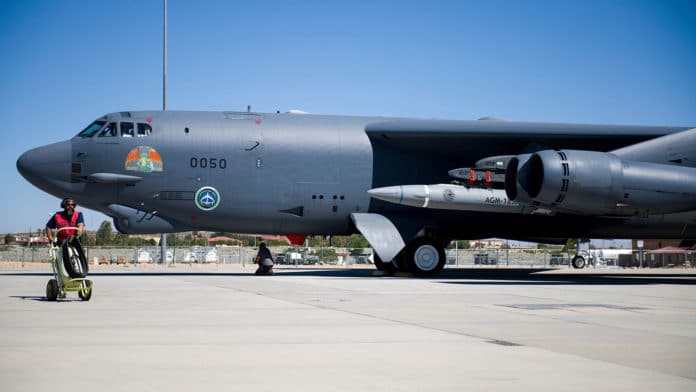The long-awaited first test on the American AGM-183A hypersonic missile was, unfortunately, a failure, according to an official statement. The U.S. Air Force had a setback in demonstrating its progress in hypersonic weapons on April 5, when its first booster vehicle flight test encountered an issue on the carrier aircraft and failed to launch.
A B-52H Stratofortress took off over the Point Mugu Sea Range with the intention of firing the first booster test vehicle for the AGM-183A Air-launched Rapid Response Weapon (ARRW) program. Instead, the test missile was unable to complete its launch sequence and was safely retained on the aircraft, which had to return to base without being able to complete its mission.
This would have been the eighth flight test for the ARRW program after seven captive carriage missions. The test objectives included demonstrating the safe release of the missile from the bomber’s wing, as well as evaluating the booster performance, booster-shroud separation, and simulated glider separation.
Since the missile was retained, engineers and testers will be able to explore the flaw and return the missile for later testing. However, it is not known how long it will take to investigate the causes of failure.
Designed and built by Lockheed Martin, the AGM-183A is scheduled to reach early operational capability by September 2022. The boost-glide weapon is propelled to a maximum speed of Mach 20 (15,345 mph or 24,695 km/h) by a missile before gliding towards its target. The AGM-183A can strike targets at a distance of up to 1,000 miles (1,600 km), destroying them with a kinetic impact equivalent to a large bomb.
“The ARRW program has been pushing boundaries since its inception and taking calculated risks to move this important capability forward. While not launching was disappointing, the recent test provided invaluable information to learn from and continue ahead. This is why we test,” said Brig. Gen. Heath Collins, Armament Directorate Program Executive Officer.
The Lockheed Martin Hypersonic ARRW program aims to deliver a conventional hypersonic weapons capability to the warfighter in the early 2020s. The weapon system is designed to provide the ability to destroy high-value, time-sensitive targets. It will also expand precision-strike weapon systems’ capabilities by enabling rapid response strikes against heavily defended land targets.
